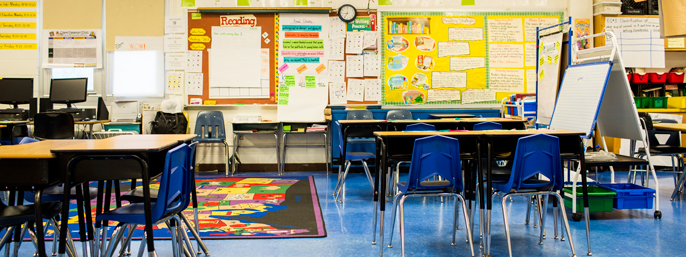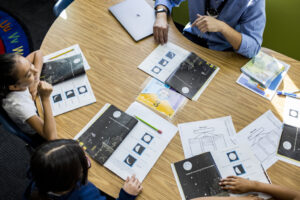For too long, students have not had consistent access to research-backed curricula—and reading scores have languished. States across the country are passing new legislation aimed at ensuring every student has access to evidence-based instruction in early literacy and that teachers have the knowledge and skills to make necessary changes in practice. These legislative shifts could change the trajectory for many students.
In 2020, Tennessee passed the Tennessee Literacy Success Act, which set new requirements for all teachers to participate in a foundational literacy skills course by August 2023. In 2021, TNTP got the opportunity to partner with the Tennessee Department of Education to envision, design, and implement a training with a two-part focus: 1) build teachers’ knowledge on the research and science behind how students learn to decode, and 2) develop teachers’ capacity to implement high quality instructional materials aligned to research and best practices. Through this Early Reading Training, TNTP trained more than 13,000 PreK- 5th grade teachers across the state through two courses.
First, TNTP created an online asynchronous course based on research and science. Teachers learned key principles of phonological awareness, phonics instruction, decoding and fluency.
In the second week of training, we led an in-person, five-day course where teachers were able to deeply reflect on their instructional materials and could plan and practice delivery of lessons with the support of colleagues. More than 9,000 teachers took both courses and completed the Early Reading Training that summer. The teachers were then assigned to one of 250 cohorts across the state every week in the summer of 2021, which included education prep providers.
What differentiates this training from other programs is that this approach acknowledges that for teachers to effectively implement a systematic, explicit phonics curriculum, they first need knowledge of the brain science behind reading acquisition. For example, one major focus of the training is the role of phonological or phonemic awareness in learning to decode—in short, students need a keen and sophisticated awareness of the ‘sounds’ of the English language in order to map those sounds into spelling patterns. You can’t read and spell the word “cat” if you can’t hear the individual sounds or phonemes in /c//a//t/. With this knowledge, teachers can prioritize daily phonemic awareness activities in the early grades and recognize what to listen for to keep students on track.
But crucially, the biggest priority was to stay focused on concrete classroom practice.
What do these evidence-based practices look like in a classroom of six-year olds?
What does a strong phonics lesson look like and sound like?
How do I support a student who can decode but struggles with fluency?
We explored these and many other questions with examples from high-quality instructional materials. We watched and analyzed videos of teachers implementing these practices, and most importantly, we practiced ourselves. Every day, teachers practiced explicit, systematic phonics lessons and received feedback from peers, which helped to refine their skills. On the final day of training, teachers spent time in collaborative groups engaging in intellectual preparation around their own district’s instructional materials to plan for effective delivery of these materials with their own students. This focus on practical application meant that teachers didn’t just leave this training with more knowledge, but also left as skilled practitioners, ready to bring these new methods to the most important consumers—their students.
The feedback for those completing both courses was outstanding, with more than 97% of participants agreeing that “The Early Reading Training has prepared me to better support my students in developing phonics-based reading skills” and that, “I feel equipped to implement the skills I learned in the Early Reading Training in my classroom.”
Following this success, TNTP signed on to repeat the training in 2022 and 2023. In the summer of 2022, an additional 4,300 Tennessee teachers completed the Early Reading Training, and the positive response has continued.
In addition, during the summers of 2022 and 2023, TNTP was tasked with offering literacy training for secondary teachers through a similar set of courses, which consisted of no more than 280 cohorts around the state for two years. This past summer, more than 2,200 teachers completed this course. Feedback was equally as positive with more than 98% of participants agreeing that, “The Secondary Literacy Training has prepared me to better support my students in developing phonics-based reading skills,” and “I feel equipped to implement the skills I learned in the Secondary Literacy Training in my classroom.”
Reflecting on this far-reaching project, we are proud to have successfully trained more than 15,000 teachers across the state, bringing a new, best-practice approach to literacy instruction and implementation. Work at this scale requires sustained collaboration by hundreds of educators and TNTP staff. With the Southeast Region Consulting team leading the way, we had incredible support from TNTP’s Learning Impact and Design and Learning Portal teams, as well as People Operations, Legal, and 100 TNTP staff, both regular and seasonal, who created and facilitated the trainings.
If you’re interested in bringing the Science of Reading to your school, let us help you start the new school year strong and follow the project on Twitter at @TN_Literacy.









